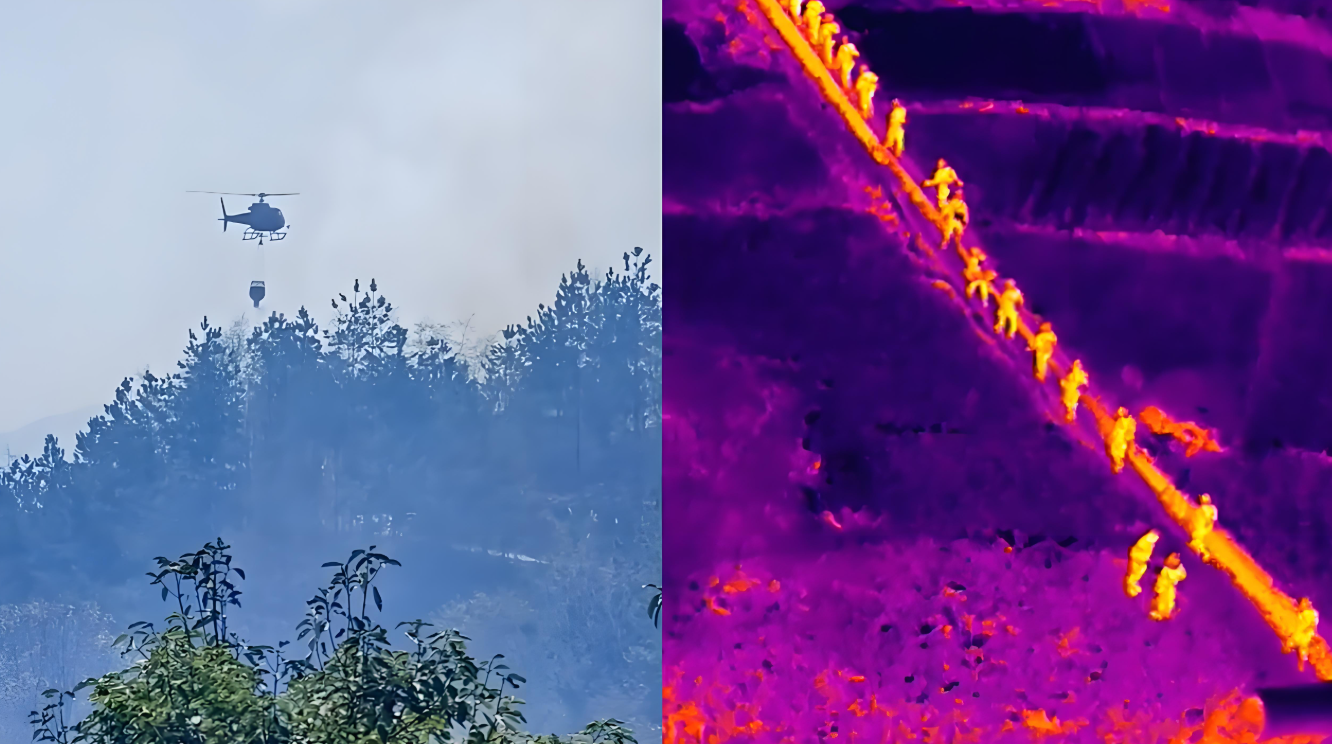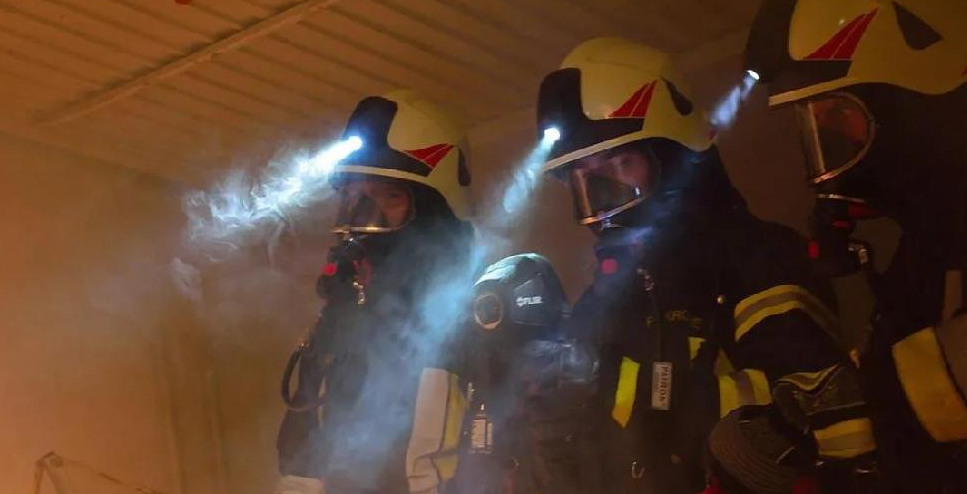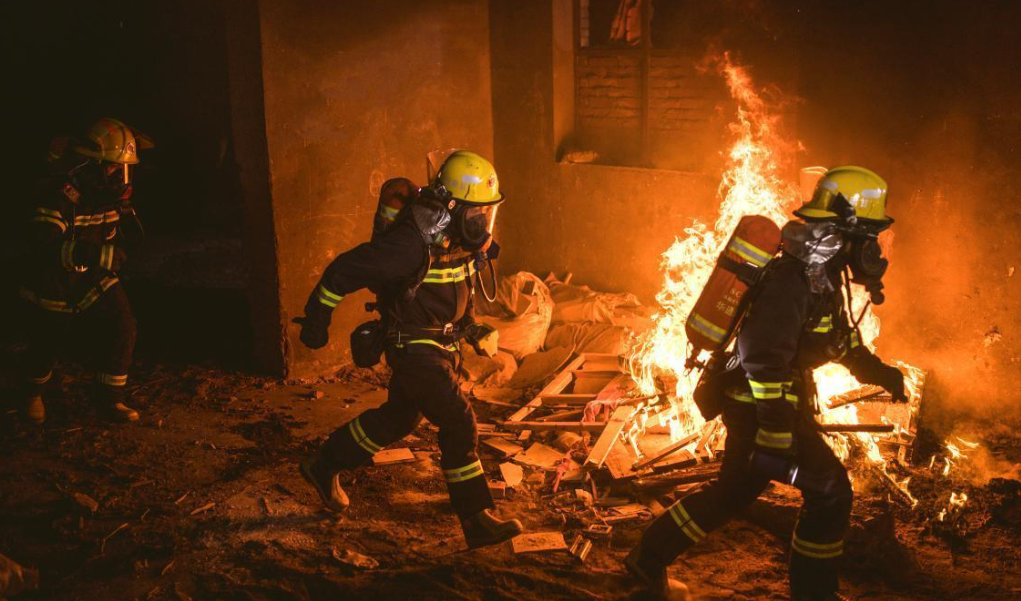In the battle against fires, every second counts. Infrared thermal imaging technology has emerged as a powerful tool, revolutionizing both fire detection and rescue operations. This technology, which detects the infrared radiation emitted by objects based on their temperature, offers several distinct advantages in the context of firefighting.
How Infrared Thermal Imaging Works
All objects above absolute zero (-273.15°C) emit infrared radiation. The amount and wavelength of this radiation vary depending on the object's temperature. Infrared thermal imaging cameras are equipped with sensors that can detect these infrared emissions. The camera then converts the detected radiation into an electrical signal, which is processed and displayed as a visual image. In this image, hotter objects appear brighter or in different colors (usually red or yellow in standard thermal imaging palettes), while cooler objects are darker or in shades of blue.

Fire Detection
Early Warning
One of the most significant contributions of infrared thermal imaging in fire prevention is its ability to provide early warnings. Before a visible fire breaks out, overheating equipment, smoldering materials, or hot spots in electrical systems can be detected. For example, in industrial settings, where large machinery and complex electrical networks are present, thermal imaging cameras can continuously monitor critical components. If a motor starts to overheat due to mechanical issues or an electrical connection begins to malfunction, the thermal imaging system can identify the abnormal heat signature long before a fire ignites. This allows maintenance crews to take corrective action, such as repairing the equipment or replacing faulty parts, preventing a potentially disastrous fire.
Hidden Fire Sources
Fires can often start in hidden or hard - to - reach places, such as behind walls, in attics, or within the cavities of furniture. Traditional fire detection methods, like smoke detectors, may not be able to identify these concealed fires until they have spread significantly. Infrared thermal imaging, on the other hand, can penetrate certain materials like drywall, thin plastics, and light insulation to detect the heat of a smoldering fire. Firefighters can use handheld thermal imaging cameras to scan buildings during inspections. If there is a hidden fire source, the camera will reveal a hot spot, enabling firefighters to quickly locate and extinguish the fire before it grows out of control.
Fire Rescue
Search and Rescue Operations
During a fire, visibility is often severely limited due to thick smoke. This makes it extremely difficult for firefighters to locate survivors. Infrared thermal imaging cameras are invaluable in such situations. Since the human body emits heat, survivors stand out as bright spots in the thermal image, even in the densest smoke. Firefighters can use thermal imaging cameras mounted on their helmets or carried as handheld devices to search through burning buildings. They can quickly identify the location of people trapped by the fire, increasing the chances of a successful rescue. In large - scale disasters, like multi - story building fires or wildfires that have encroached on residential areas, thermal imaging technology has been used to locate victims who may be unconscious or unable to call for help.

Assessing Fire Spread and Hazardous Areas
In addition to locating survivors, infrared thermal imaging helps firefighters assess the spread of the fire. By scanning the area, they can determine which areas are the hottest and where the fire is likely to spread next. This information is crucial for planning firefighting strategies. For example, if a thermal imaging camera shows that a fire is rapidly spreading through a wooden structure towards a storage area filled with flammable materials, firefighters can focus their efforts on creating firebreaks or applying water or fire - retardant foam in those areas to prevent the fire from escalating. It also helps in identifying hazardous areas, such as areas with high - temperature gas accumulations or areas where structural integrity may be compromised due to excessive heat.

Real - World Examples
In many major fire incidents around the world, infrared thermal imaging has played a pivotal role. In the aftermath of wildfires, thermal imaging drones are often deployed. These drones can cover large areas quickly, detecting hot spots that may reignite the fire. By identifying these hidden hot spots, firefighting teams can target their efforts more effectively, ensuring that the fire is completely extinguished. In urban fires, such as high - rise building fires, thermal imaging has helped firefighters navigate through smoke - filled corridors, locate trapped occupants, and plan the most efficient way to extinguish the fire.
In conclusion, infrared thermal imaging technology has become an indispensable part of modern fire detection and rescue operations. Its ability to detect heat signatures, provide early warnings, and enhance visibility in smoky conditions has saved countless lives and minimized property damage. As the technology continues to evolve, with improvements in resolution, range, and portability, it will only become more effective in the fight against fires.




